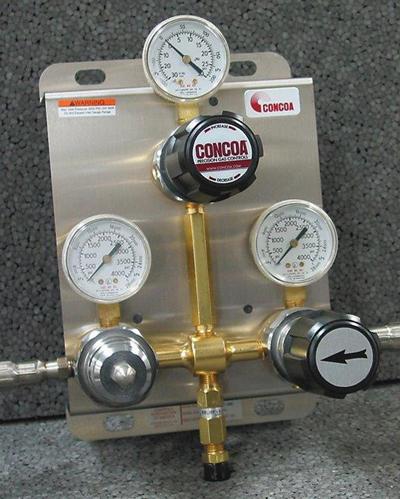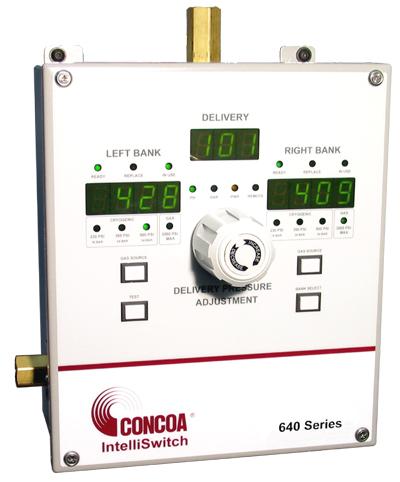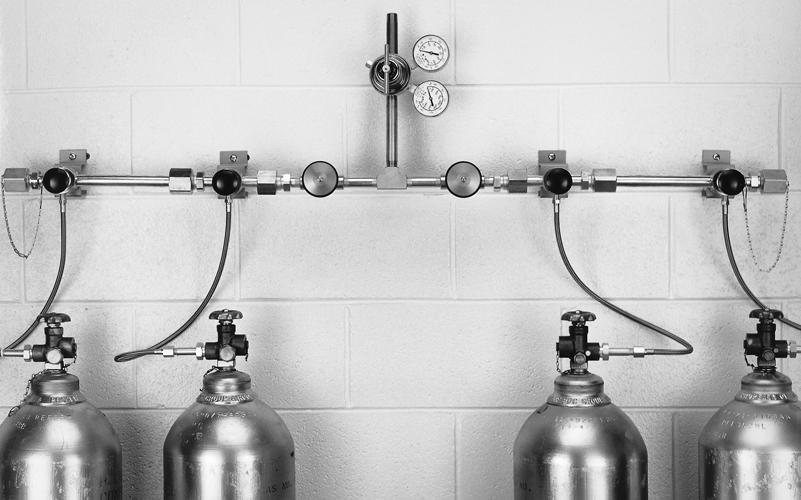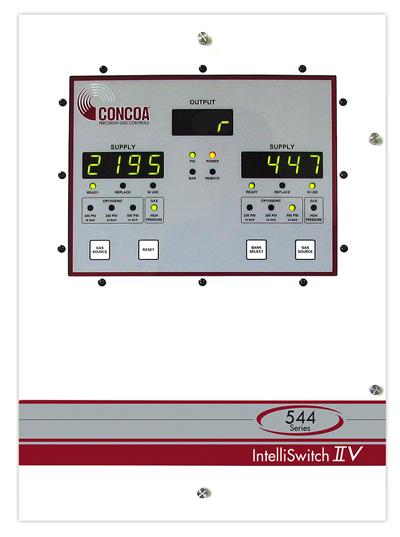Application Specialist
- FMA
- The Fabricator
- FABTECH
- Canadian Metalworking
Categories
- Additive Manufacturing
- Aluminum Welding
- Arc Welding
- Assembly and Joining
- Automation and Robotics
- Bending and Forming
- Consumables
- Cutting and Weld Prep
- Electric Vehicles
- En Español
- Finishing
- Hydroforming
- Laser Cutting
- Laser Welding
- Machining
- Manufacturing Software
- Materials Handling
- Metals/Materials
- Oxyfuel Cutting
- Plasma Cutting
- Power Tools
- Punching and Other Holemaking
- Roll Forming
- Safety
- Sawing
- Shearing
- Shop Management
- Testing and Measuring
- Tube and Pipe Fabrication
- Tube and Pipe Production
- Waterjet Cutting
Industry Directory
Webcasts
Podcasts
FAB 40
Advertise
Subscribe
Account Login
Search
The economies of efficiency in gas delivery
A few simple changes can help you reduce costs and maximize performance
- By John Karpus
- April 28, 2014
- Article
- Arc Welding
Since the mid-1800s various industries around the world have used compressed air and other gases for many applications. While gas regulators have evolved into today’s safer, state-of-the-art systems, the basic principles of gas delivery have not changed. The process of delivering gas molecules to an application still requires a cylinder or container as a source and a given pressure and flow to an application.
For many years the basic manifold has been used for gas sourcing (see Figure 1). Multiple cylinders are connected to the manifold, from which the gas then is fed into a regulator with its pressure set for the job. If the job demands more gas flow, more cylinders can be added to the manifold.
The Economies of Efficiency
The true cost of any gas delivery system includes how much time it takes to keep the system running. Continuous supply of gas to the application is the objective.
Industry standards say it takes 20 to 30 minutes to change out an empty gas cylinder with a full one. This regular interruption causes lost productivity. When multiplied by the number of workstations in a shop, it adds up to considerable lost time.
The other unseen cost is cylinder rental—25 to 40 cents a day per cylinder for high-pressure cylinders and $1.50 to $3 per day for liquid cylinders.
By making some changes to your system and installing some new equipment, you can help reduce some of your costs and increase efficiency in your operations.
Cylinder Cradles
A recent development in the compressed gas industry is the introduction of high-pressure cylinder cradles or gas packs. These welded steel pallets hold 6, 12, or 18 high-pressure cylinders, all connected to a common outlet port. The cylinder bundles can have an internal working pressure of 3,000 to 4,500 PSI. The configuration helps minimize the footprint while decreasing empty cylinder changeout time.
Piping System
Another step toward efficiency and cost reduction may be installing a piping system that connects to a cylinder manifold, switchover system, or bulk tank.
The key here is to size the piping and gas delivery system for the total combined pressure and flow required at all the use points. This ensures gas pressure and flow will not be restricted, preventing starvation of any of the downstream use points.
Before choosing a pipe size, consider future expansion of the piping system. Since the difference in cost of materials is minimal, it’s a good idea to err on the side of caution and use a larger pipe or tube size.

Figure 2
Semiautomatic switchovers require less tending than a basic manifold and provide continuous gas delivery to an application.
Two types of piping systems are available:
- Dead-end. The piping system starts at the cylinder manifold and ends at the last drop or use point.
- Looped. The gas has two ways to travel to the last use point. This system style can help ensure none of the use points are starved if there is a large flow demand at one location.
Liquid Cylinders
At times a mode change is the next step in efficiency. Since the gas product is at a premium in high-pressure cylinders, you can lower your costs by using a vertical gas liquid (VGL) or liquid cylinder. Commonly available in oxygen, nitrogen, argon, and CO2
Liquid cylinders have a gas-use port, liquid-use port, and vent-connection port on the top of the cylinder. A pressure-building circuit generates additional pressure and flow to the application, while an economizer circuit prevents the system from generating gas when demand is low.
The cylinders feature safety relief valves set at 230, 350, or 500 PSI to ensure internal pressures won’t increase enough to cause cylinder rupture or explosion. With standard liquid argon, nitrogen, and oxygen cylinders, the pressure-building capacity typically is about 300 SCFH, with peak flow of 350 SCFH for short periods. With standard liquid CO2 cylinders, the pressure-building capacity is about 100 SCFH, with peak flow of 150 SCFH for short periods of time.
If the application demands more flow than one cylinder can provide, additional cylinders can be added.
Switchover System
In a primary/reserve switchover, cylinders are hooked up to a primary side and a secondary (reserve) side. Only one side delivers gas at a time, and when the primary-side cylinder regulator reaches a predetermined pressure set point, the system changes over to the secondary-side regulator with no interruption in gas delivery.
These systems can be outfitted with an alarm to notify the operator when the switchover has occurred so the empty cylinders can be replaced.
Another option is a semiautomatic switchover (pressure differential) (see Figure 2). Available for the last 60 years, they function reliably. The systems require less tending than a basic manifold with a regulator or primary/reserve system and provide continuous gas delivery to an application.
The semiautomatic systems typically feature a knob or handle that needs to be rotated when a switchover has occurred and empty cylinders are replaced. They usually are pressure-differential in function and similar to primary/reserve systems, but the first regulator has two settings—300 and 100 PSI—and a second regulator is set at 200 PSI, feeding into a common line. The first 300-PSI cylinder regulator keeps the output of the 200-PSI regulator closed.
As the first cylinder regulator empties and the pressure drops below 300 PSI, the second cylinder regulator opens up and starts to feed the system. When this happens, the directional knob or lever is rotated to change the setting of the first regulator to 100 PSI, and the empty cylinder is replaced. When the pressure in the second cylinder drops to less than 200 PSI, the 100-PSI regulator continues to supply the system.

Figure 3
The fully automatic electronic switchover changes between two liquid cylinders when it senses a low pressure condition, and then waits while the low-pressure cylinder turns remaining liquid in the cylinder to gas. This allows extraction of most of the product from the cylinder.
When choosing a switchover system, it is good to remember that pressure-differential switchovers do not work efficiently with liquid cylinders supplying the product. If the demand for gas is too high for a liquid cylinder to keep up, the head pressure in the cylinder will drop below the switchover point and create a false or premature empty condition. The system also could draw product from both sides, creating a situation in which both sides of the switchover empty at the same time, running the application out of product and negating the benefits of using a switchover. Additionally, pressure-differential switch–overs can leave 15 percent or more of unused product behind.
A fully automatic electronic switchover (see Figure 3) accommodates liquid or high-pressure cylinder sources. When the system senses a low pressure condition in the liquid cylinder on side A of the switchover, it changes over to the B side source and then waits 30 to 40 minutes to allow the liquid cylinder on the A side to turn any remaining liquid in the cylinder to gas. This allows extraction of most of the product from the liquid cylinder, leaving about 3 percent or less unused.
The electronic switchover also delivers the normally vented gas from the waiting cylinder back into the process. Some of these switchovers can generate an e-mail notification when the system has determined an empty-source condition.
One type of electronic switchover performs only the switchover function, with a variety of switchover points up to 2,000 PSI (see Figure 4). This system is suitable for high-pressure gas delivery applications of more than 400 PSI or for situations in which the pressure control is separate from the system.
Gas switchovers using PLC technology are now being introduced. They use off-the-shelf controllers that actuate solenoid valves for the switching function.
About the Author
John Karpus
1501 Harpers Road
Virginia Beach, VA 23454
800-225-0473
Related Companies
subscribe now

The Fabricator is North America's leading magazine for the metal forming and fabricating industry. The magazine delivers the news, technical articles, and case histories that enable fabricators to do their jobs more efficiently. The Fabricator has served the industry since 1970.
start your free subscription- Stay connected from anywhere

Easily access valuable industry resources now with full access to the digital edition of The Fabricator.

Easily access valuable industry resources now with full access to the digital edition of The Welder.

Easily access valuable industry resources now with full access to the digital edition of The Tube and Pipe Journal.
- Podcasting
- Podcast:
- The Fabricator Podcast
- Published:
- 04/16/2024
- Running Time:
- 63:29
In this episode of The Fabricator Podcast, Caleb Chamberlain, co-founder and CEO of OSH Cut, discusses his company’s...
- Trending Articles
How to set a press brake backgauge manually

Capturing, recording equipment inspection data for FMEA

Tips for creating sheet metal tubes with perforations

Are two heads better than one in fiber laser cutting?

Hypertherm Associates implements Rapyuta Robotics AMRs in warehouse

- Industry Events
16th Annual Safety Conference
- April 30 - May 1, 2024
- Elgin,
Pipe and Tube Conference
- May 21 - 22, 2024
- Omaha, NE
World-Class Roll Forming Workshop
- June 5 - 6, 2024
- Louisville, KY
Advanced Laser Application Workshop
- June 25 - 27, 2024
- Novi, MI




























